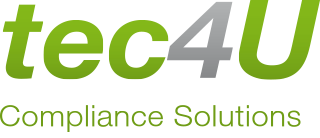When it comes to material compliance legislation, lawmakers are caught in a constant balancing act: on the one hand, they must achieve societal goals—namely protecting human health and the environment from harmful substances; on the other, they need to preserve the manufacturing capabilities of industry. To do so, they define rules that specify who is affected and how, often including compliance requirements, temporary provisions, or exemptions. However, the actual path to achieving compliance is typically not spelled out in legal texts. Instead, this is left to standards, technical guidelines, and implementation documents—commonly referred to as the state of the art in science and technology.
The less concrete these implementation guidelines are, the greater the uncertainty for those affected by the law—including both companies and regulatory authorities. In case of liability, the state of the art in science and technology becomes the benchmark for determining whether a violation was due to negligence. Negligence can range from simple oversight to gross negligence or even intent, and also includes failing to implement the appropriate resources and processes needed for compliance within the company. If a company is found to be at fault, it may face administrative or criminal proceedings, civil lawsuits, and product recalls—along with the associated costs, loss of customers, and reputational damage.
The definitions are as follows:
“State of the Art” refers to the body of knowledge available to professionals that includes standards which are:
- scientifically grounded,
- practically tested, and
- sufficiently proven in practice.
“State of Scientific Knowledge” refers to the current level of research in a specific field. The knowledge is:
- scientifically grounded,
- demonstrated to be technically feasible,
- not yet practically tested, and
- not yet sufficiently proven in practice.
DIN EN IEC 63000 – Legally Compliant Implementation of Material Compliance Requirements
When applying this concept to material compliance, the following picture emerges: Material compliance—i.e., compliance with substance-specific regulations—is defined by national and international legislation, such as the REACH Regulation or various RoHS Directives. However, clear implementation guidance—that is, documentation of the state of the art in science and technology—remains limited. The most comprehensive and widely recognized standard for implementing material compliance today is DIN EN IEC 63000. Additional insights into the state of science are provided by national helpdesks (such as the ECHA Helpdesk), formal training standards (e.g., “Material Compliance Officer” certified by TÜV Saarland), and implementation recommendations from industry associations. For example, the German Caravaning Industry Association (CIVD) advises its members to require their suppliers to comply with the “CIVD Material Compliance Guideline” as part of their contractual obligations. IEC 63000 defines five key elements for implementing material compliance:
1. Assessing Supplier Reliability
Evaluating a supplier’s trustworthiness is a core component of material compliance implementation. Under IEC 63000, a supplier’s statement on material compliance should only be considered valid once their reliability has been assessed. This is especially relevant given the rapidly evolving regulatory landscape, where suppliers may provide statements without fully validating them due to shifting priorities.
2. Contractual Agreements with Suppliers
Suppliers must be informed and contractually obligated to implement relevant requirements—including material compliance—within the components they supply. Because these requirements vary widely across product categories, a differentiated approach is recommended. In practice, incorporating a Material Compliance Specification as a binding document into relevant contracts (such as purchase agreements, quality assurance contracts, and product specifications) has proven effective. This ensures comprehensive supplier awareness and commitment.
3. Requesting Article-Specific Material Compliance Declarations
Once the target state is defined in the Material Compliance Specification, it is essential to verify actual compliance in the final product. According to both the state of science (ECHA Helpdesk) and the state of the art (IEC 63000), article-specific declarations are required. This means that each component—identified by part number and name—must have its own compliance confirmation. General statements are not sufficient.
4. Risk Analysis for Components Without Compliance Information
Recognizing that full supplier data is not always obtainable, both lawmakers and IEC 63000 allow for missing information—provided the component in question is not considered a high-risk part with respect to material compliance. However, it’s important to note that such components cannot be backed by legally binding compliance statements. While IEC 63000 does not specify a standard process for this, guidance based on the state of science is available.
5. Analytical Testing for High-Risk Components
If the risk analysis identifies components likely to contain restricted or banned substances, these must undergo chemical testing to rule out non-compliance. Although the regulatory framework provides only a limited number of detailed rules, those that exist—combined with expert knowledge—form a solid foundation for defining the state of the art in science and technology in material compliance, with IEC 63000 at the forefront. Implementing processes below this standard may quickly be seen as negligent, and—as noted—can lead to significant legal, financial, and reputational consequences.
We’re happy to support you in implementing IEC 63000 in your processes. Don’t hesitate to contact us!
